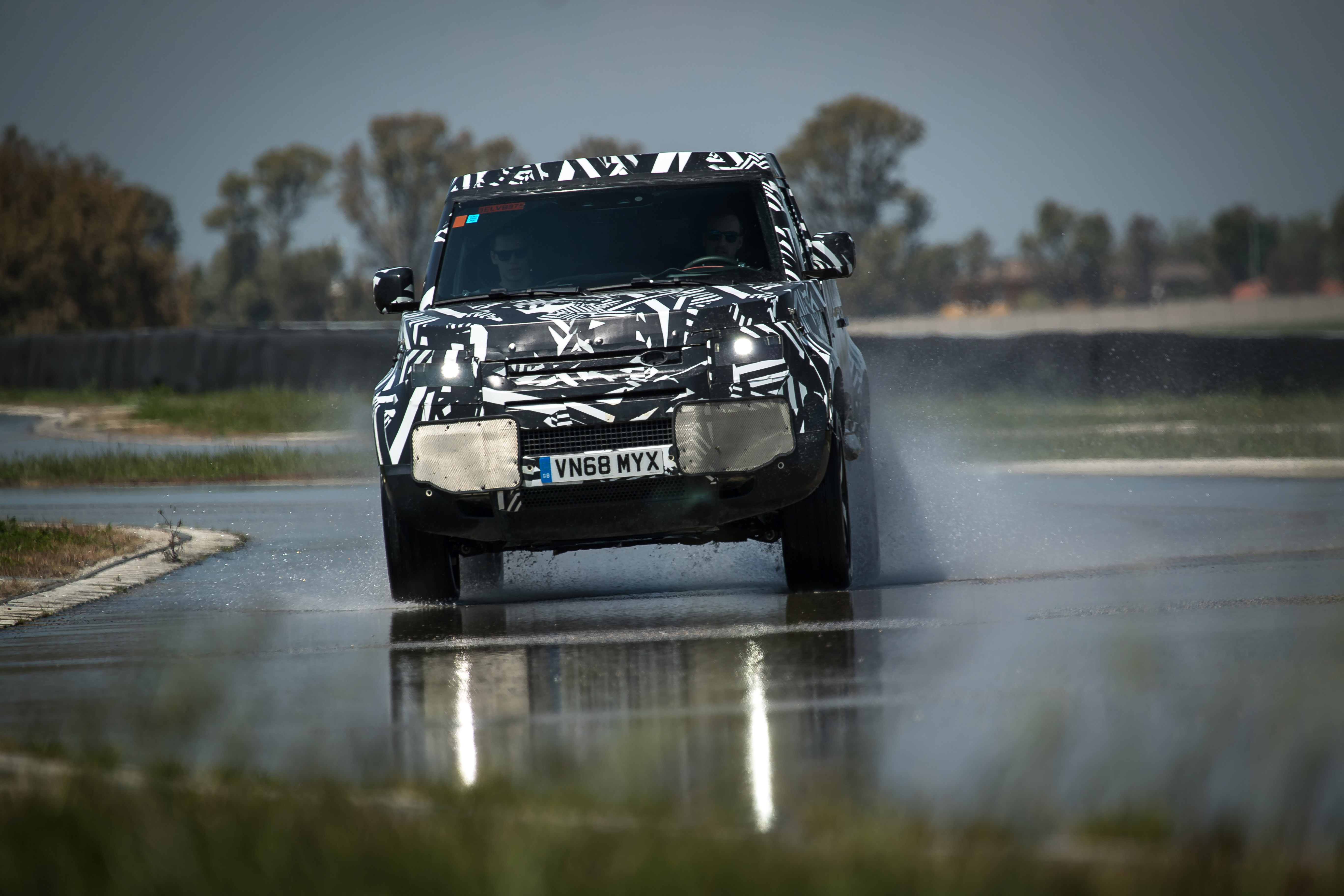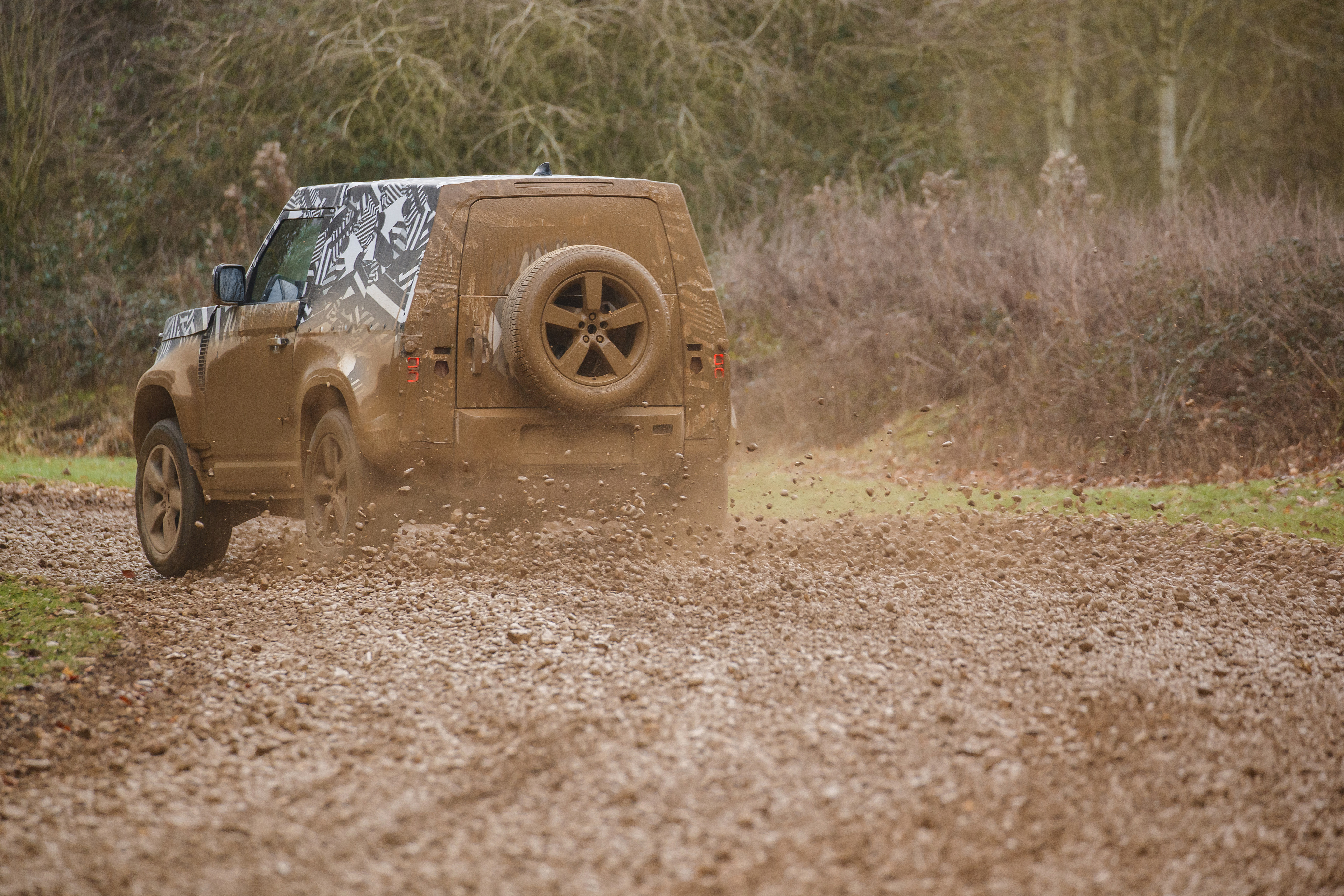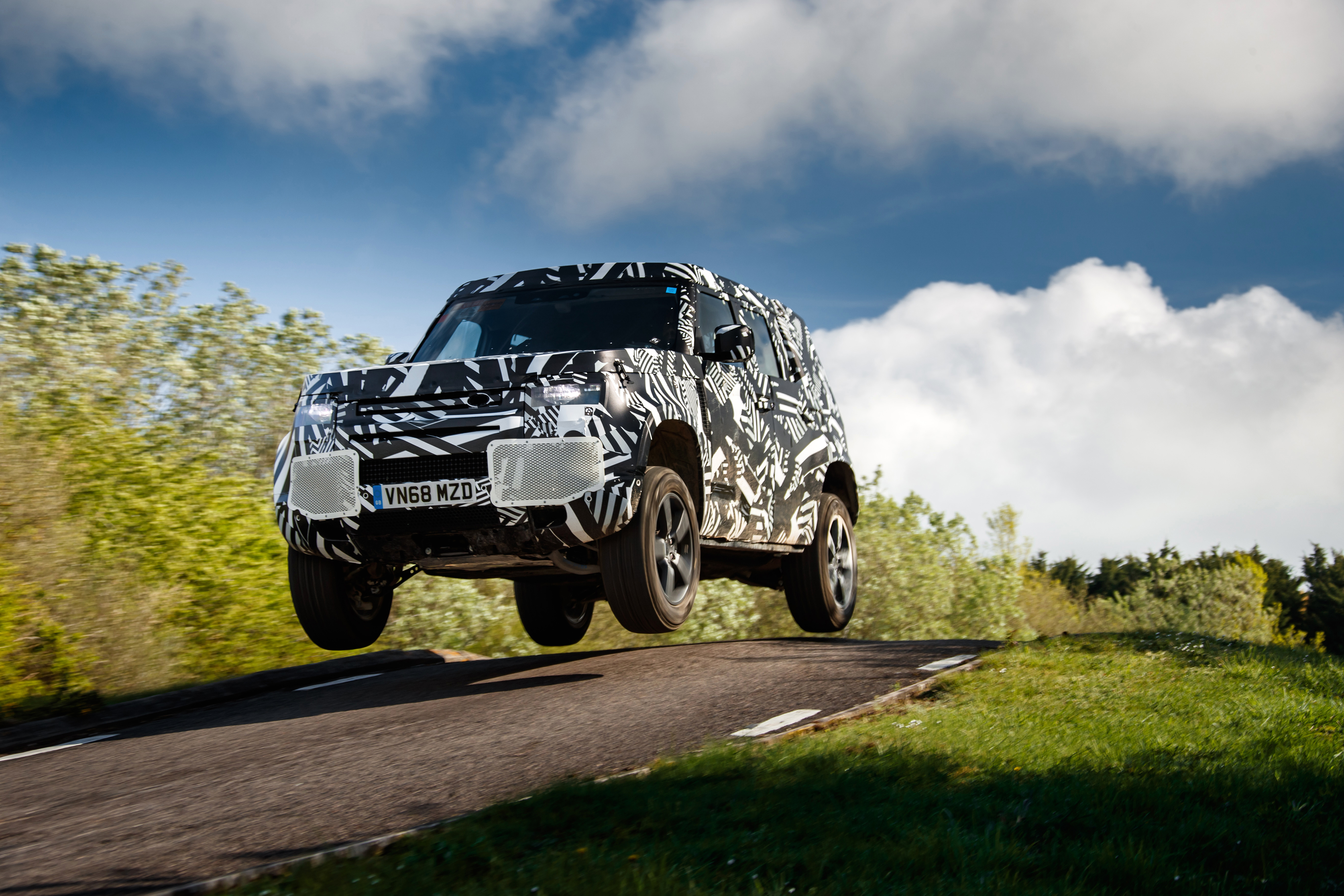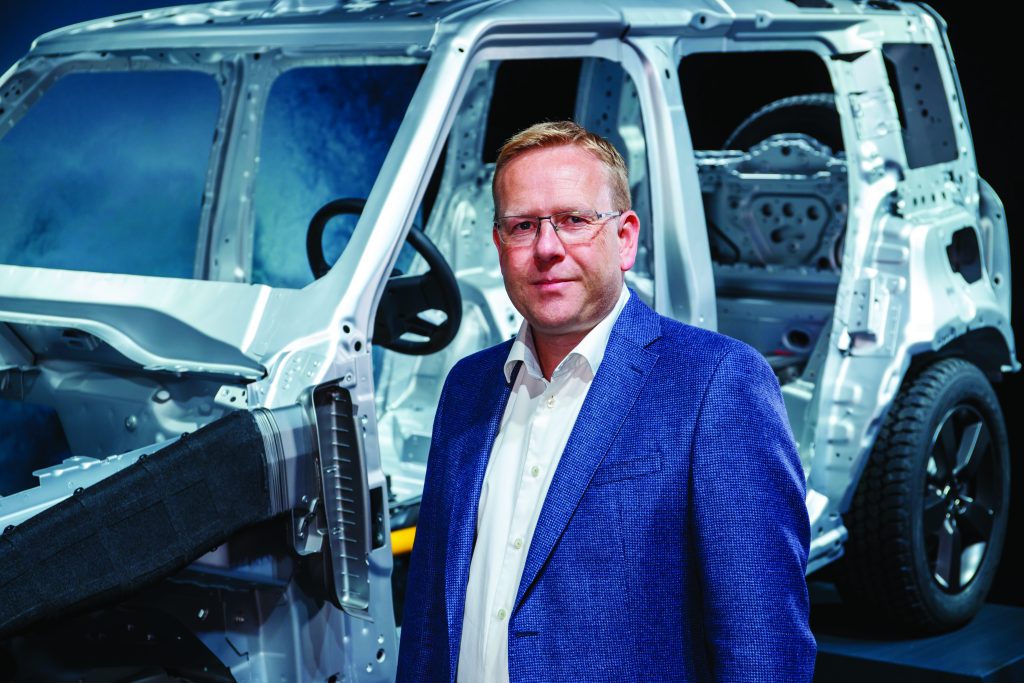The most rigorous test program in Land Rover’s history is laying the foundations for a new era of products – as vehicle line director Nick Collins explains.
After 10 transformative years under Tata ownership, Land Rover is on the cusp of delivering perhaps the longest-awaited second-generation product in the history of the automotive industry. The new Defender is the first all-new replacement of a product line born in 1948 – the result of some 62,000 validation tests to find the center point of an incredibly complex Venn diagram of new and existing customer requirements. For vehicle line director Nick Collins, that baptism of fire was an opportunity too good to miss.
“I’ve been with Jaguar Land Rover for nearly five years now, and Defender was a big part of the reason why I’m here,” he explains. “The program had been going for a few months [when I joined], we had some design themes which we were pretty settled on and the original strategic thinking of what we wanted to do, but really there was relatively minimal engineering done at that point.”
Collins’s role has a broad remit, working across the Range Rover, Range Rover Sport, Discovery and Defender model lines, leading development and engineering from the concept phase to end of life. Even in that company the Defender’s requirements are broad; it not only had to offer the longevity and off-road capability of its predecessor, but it had to do so while meeting the requirements of 128 target markets and bringing the latest connected and electrified technologies as well. Design models set the tone early on, but Collins says that personality couldn’t simply be skin deep.
“We did a lot of work early on to understand what it is that makes people like myself go wobbly at the knees driving Defenders – the fun factor – and how we could create that in a modern way. So we put extra effort in to get that ‘spirit of Defender’ into the new Defender. The car is big on personality visually; I wanted it to be big on personality from the driving perspective as well.”
A mature product portfolio laid down some of the foundations for doing so. Versions of the D7 architecture are used across Jaguar Land Rover’s mid- to full-size product lines – it’s an aluminum monocoque with a longitudinally mounted drivetrain, ideal for the Defender. The newcomer isn’t a re-skin; its extreme off-road capability required a proportionally longer wheelbase and unique suspension geometry, so Collins says driving characteristics were honed early in the program beneath ‘cut and shut’ Range Rover Sport bodywork.
This process is supported by extensive simulation. Again, characteristics were defined early on, including two wheelbases within the boxy upright silhouette, the central jump seat and side-hinged rear door – none of which is shared with other products. Digital models enabled fine-tuning of the surfaces to improve aerodynamics and heat management, as well as improving torsional rigidity. Both wheelbases were developed in tandem, to avoid repetition.
Accept no substitute
Jaguar Land Rover invested US$37m (€44m) in new testing facilities to support new products, and the Defender program was the first to use this expanded in-house capability. Validation work was as reliant
on new software test centers, located in Shannon and Manchester, as it was on traditional Defender stomping grounds such as the Eastnor Castle estate in Herefordshire. These enabled “hundreds of thousands” of tests to be carried out in quick succession as the car neared launch. Its new electrical architecture incorporates 5G connectivity for over-the-air updates and a high-speed Ethernet that can simultaneously transmit up 21,000 messages between 85 onboard ECUs, compared with 13,000 for previous-generation systems.
“We’re substantially pushing the boundaries of what we can do in terms of hardware-in-the-loop and vehicle-modeling testing of that software,” Collins continues. “With the extent of software development and testing we’re doing, we’re taking it to a new level that will be the foundation we build on moving forward as well.
“I think as an industry that’s an area we’re going to be pushing harder and harder, and some of those software elements really enable the off-road capability of the car as well in terms of how we control the vehicle. We’ve got some exciting elements that we’re doing in that space that will certainly be replicated on every [future] vehicle program. All of us that are involved can see limitless opportunities of how we can push it forward.”
However, physical evaluation remains a core activity. With the car signed off virtually, verification prototypes, built in the second half of 2018, were put through their paces in “the most punishing on and off-road environments” Land Rover could find – from the Arctic Circle to Dubai, and even the Nürburgring Nordschleife circuit.
“Simulation is crucial,” Collins says, “but it’s no substitute for tires on dirt. We always try to do more and more in simulation – that’s what we’re working toward. But there are always some requirements that you have to do physically from a regulatory perspective and there are still elements of how vehicles behave, particularly from a dynamics character, that are quite hard to model in CAE.
“Those finer elements, of what you can feel in a car and the contributing factors, are quite difficult to model accurately, but we’re always learning. When we find something that we struggle to model accurately, we often go back to the CAE and try to understand what it is that we’re feeling in the car. If we can identify that, we put it back into our understanding of the modeling for the next time.”
Keep it real
It wasn’t just about character building. Land Rover dialled up the severity of durability testing developed for vehicles, aided by 6DOF test rigs introduced in 2014, which use vertical and horizontal actuators to put high structural loads through the body – with individual settings for each model. Defender prototypes were subjected to repeated 40km/h (25mph), 90° impacts with a 200mm curb – 50mm higher than for other products, which Collins says puts a 7 metric ton vertical load through the suspension and body structure. The bespoke steel subframes, uprated bushes and ball joints were developed in close partnership with suppliers, and testing ensured the new electrical systems were as durable as the car’s mechanical parts.
Collins continues, “There are some elements where the simulation isn’t really your friend and the physical property is better, and some elements where you have to do it physically because the test or the regulations require it. So I don’t see us getting to zero prototypes any time soon because of those requirements.”
So the test process is becoming ever broader, but Tata ownership is delivering the framework needed for future products – even the most challenging ones. “Tata has been incredibly supportive of JLR and given us the freedom to do projects like Defender, and the support it gives us is incredible. We’re a pioneering company bringing pioneering technology to the market, and that needs to be the end technology in the vehicle but also the methods and tools we use to develop that technology in the first place.”
The platform
The Defender is the final Land Rover product to move away from a body-on-frame construction; it’s based on a heavily-adapted version of the D7 all-aluminum platform, code-named D7x. However, it’s almost entirely new, featuring proportionally longer wheelbases, 500mm axle articulation and the latest-generation electrical architecture. Even the engines – including new six-cylinder 48V ‘mild hybrids’ – were calibrated specifically for the Defender, owing to the height of the car and 815mm rolling diameter wheels with the largest contact patch in the range.
Collins is quick to point out that this fundamental shift in architecture isn’t the compromise some assume. At 30kNm/°, its torsional rigidity is three times that of the best body on frame, which is as important
off road as it is on it. Additional strengthening includes a powder-coated magnesium beam across the dashboard that is left exposed as a design feature and doubles up as a grab handle for passengers.
“[Monocoque construction] is an enabler rather than a disabler, it helps drive the stiffness and strength into the product to deliver the actions we want. But it’s fundamental as well in terms of providing the refinement from an NVH perspective and also the dynamic ability we want to achieve, to make the car as brilliant on road as well as off-road at the same time,” he explains.
Fleet support
Few people are more familiar with the Defender than the many global fleets that have depended on its off-road capability for decades – some of which have been using them since the 1950s. Collins says these organizations provide an extra layer to the car maker’s own testing, with selected fleets given prototype vehicles and invited to offer feedback as part of the development phase.
“They bring a unique perspective in terms of the types of challenges and environments they operate in, and the sort of requirements they need from the vehicle. That helps to make sure we’re maintaining those relationships as we go forward,” Collins explains.
In turn, selling points of the original Defender have been carried forward. “We’ve got 14 ECUs on the vehicle, which we can update over the air, so we will be able to keep the car fresh throughout its life,” he says. A lot of people said about the old Defender that it was so mechanically simple you could fix it anywhere in the world. In this modern Defender you can connect the car up over satellite phone anywhere in the world and we can update the software. For some of those fleets it’s about keeping operational wherever they are, we’ve got a very modern interpretation for them.”
By Alex Grant






